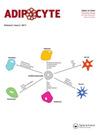Identification of FOXM1 and CXCR4 as key genes in breast cancer prevention and prognosis after intermittent energy restriction through bioinformatics and functional analyses
IF 3.5
4区 生物学
Q2 ENDOCRINOLOGY & METABOLISM
引用次数: 0
Abstract
ABSTRACT We explored potential biomarkers and molecular mechanisms regarding breast cancer (BC) risk reduction after intermittent energy restriction (IER) and further explored the association between IER and BC prognosis. We identified differentially expressed genes (DEGs) in breast tissues before and after IER by analyzing the expression profile from GEO. Then, enrichment analysis was used to identify important pathways of DEGs and hub genes were selected from PPI network. After that, GEPIA, ROC, and KM plotter were used to explore the preventive and prognostic value of hub genes. It was found that FOXM1 and CXCR4 were highly expressed in BC tissues and associated with the worse prognosis. FOXM1 and CXCR4 were down-regulated after IER , which meant that FOXM1 and CXCR4 might be the most important key genes for reducing the risk and improving prognosis of BC after IER . ROC curve indicated that FOXM1 and CXCR4 also had the predictive value for BC. Our study contributed to a better understanding of the specific mechanisms in protective effects of IER on BC and provided a new approach to improve the prognosis of BC, which might provide partial guidance for the subsequent development of more effective treatments and prevention strategies.通过生物信息学和功能分析鉴定FOXM1和CXCR4作为间歇性能量限制后乳腺癌症预防和预后的关键基因
摘要我们探讨了间歇性能量限制(IER)后乳腺癌症(BC)风险降低的潜在生物标志物和分子机制,并进一步探讨了IER与BC预后之间的关系。我们通过分析GEO的表达谱,鉴定了IER前后乳腺组织中的差异表达基因(DEGs)。然后,利用富集分析确定DEG的重要途径,并从PPI网络中筛选出hub基因。然后,使用GEPIA、ROC和KM绘图仪来探索中枢基因的预防和预后价值。发现FOXM1和CXCR4在BC组织中高表达,并和预后较差有关。FOXM1和CXCR4在IER后下调,这意味着FOXM1、CXCR4可能是降低IER后BC风险和改善预后的最重要的关键基因。ROC曲线显示FOXM1和CXCR4对BC也有预测价值。我们的研究有助于更好地理解IER对BC保护作用的具体机制,并为改善BC的预后提供了一种新的方法,这可能为随后开发更有效的治疗和预防策略提供部分指导。
本文章由计算机程序翻译,如有差异,请以英文原文为准。
求助全文
约1分钟内获得全文
求助全文
来源期刊

Adipocyte
Medicine-Histology
CiteScore
6.50
自引率
3.00%
发文量
46
审稿时长
32 weeks
期刊介绍:
Adipocyte recognizes that the adipose tissue is the largest endocrine organ in the body, and explores the link between dysfunctional adipose tissue and the growing number of chronic diseases including diabetes, hypertension, cardiovascular disease and cancer. Historically, the primary function of the adipose tissue was limited to energy storage and thermoregulation. However, a plethora of research over the past 3 decades has recognized the dynamic role of the adipose tissue and its contribution to a variety of physiological processes including reproduction, angiogenesis, apoptosis, inflammation, blood pressure, coagulation, fibrinolysis, immunity and general metabolic homeostasis. The field of Adipose Tissue research has grown tremendously, and Adipocyte is the first international peer-reviewed journal of its kind providing a multi-disciplinary forum for research focusing exclusively on all aspects of adipose tissue physiology and pathophysiology. Adipocyte accepts high-profile submissions in basic, translational and clinical research.
 求助内容:
求助内容: 应助结果提醒方式:
应助结果提醒方式:


